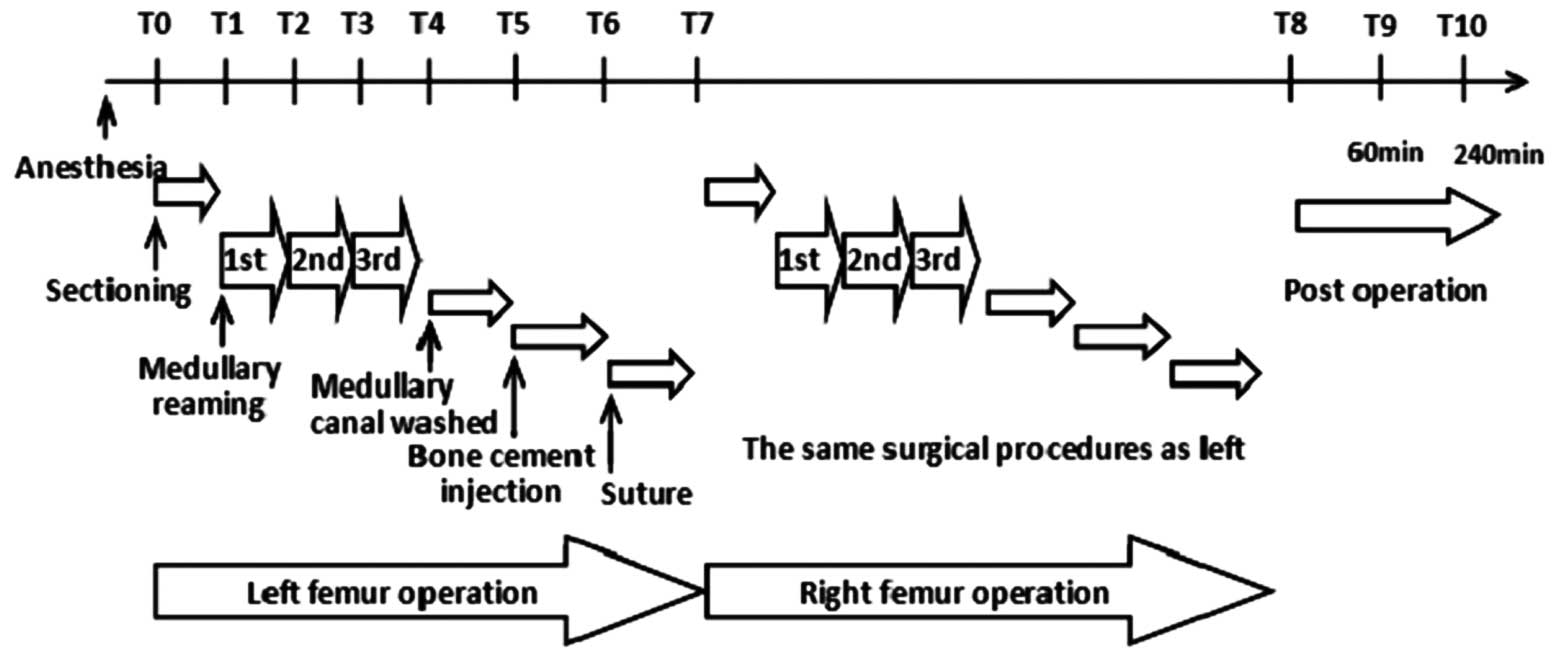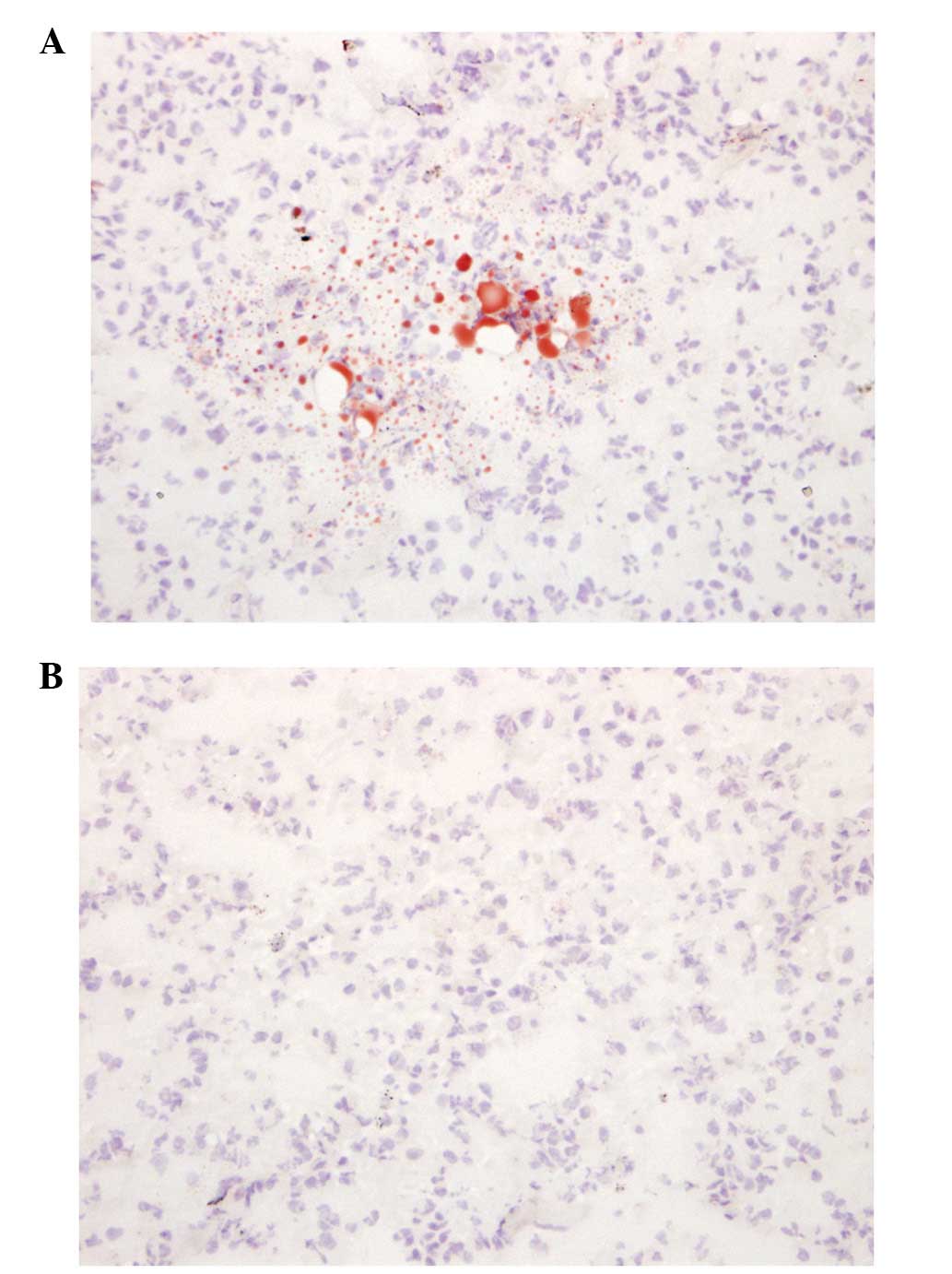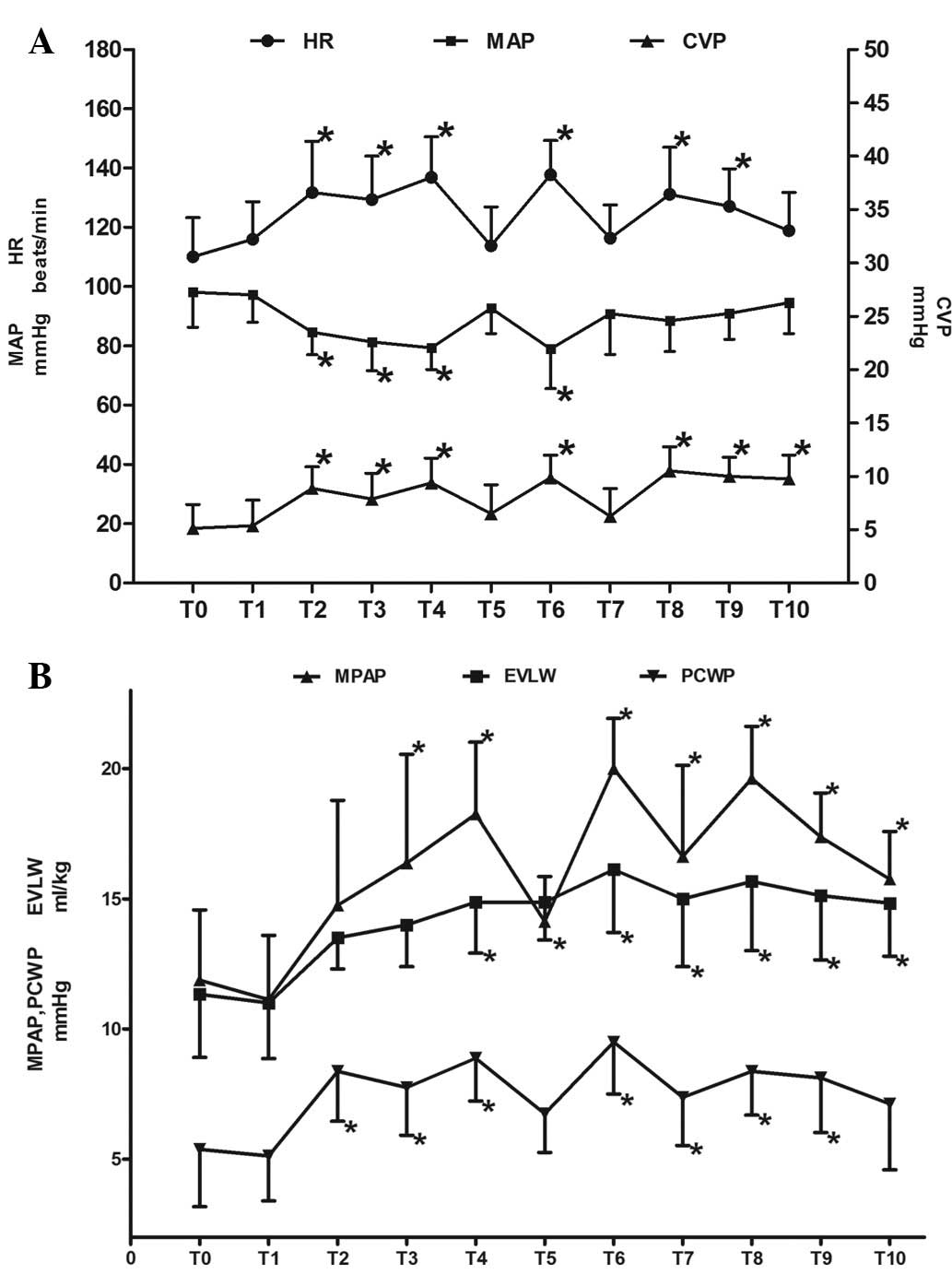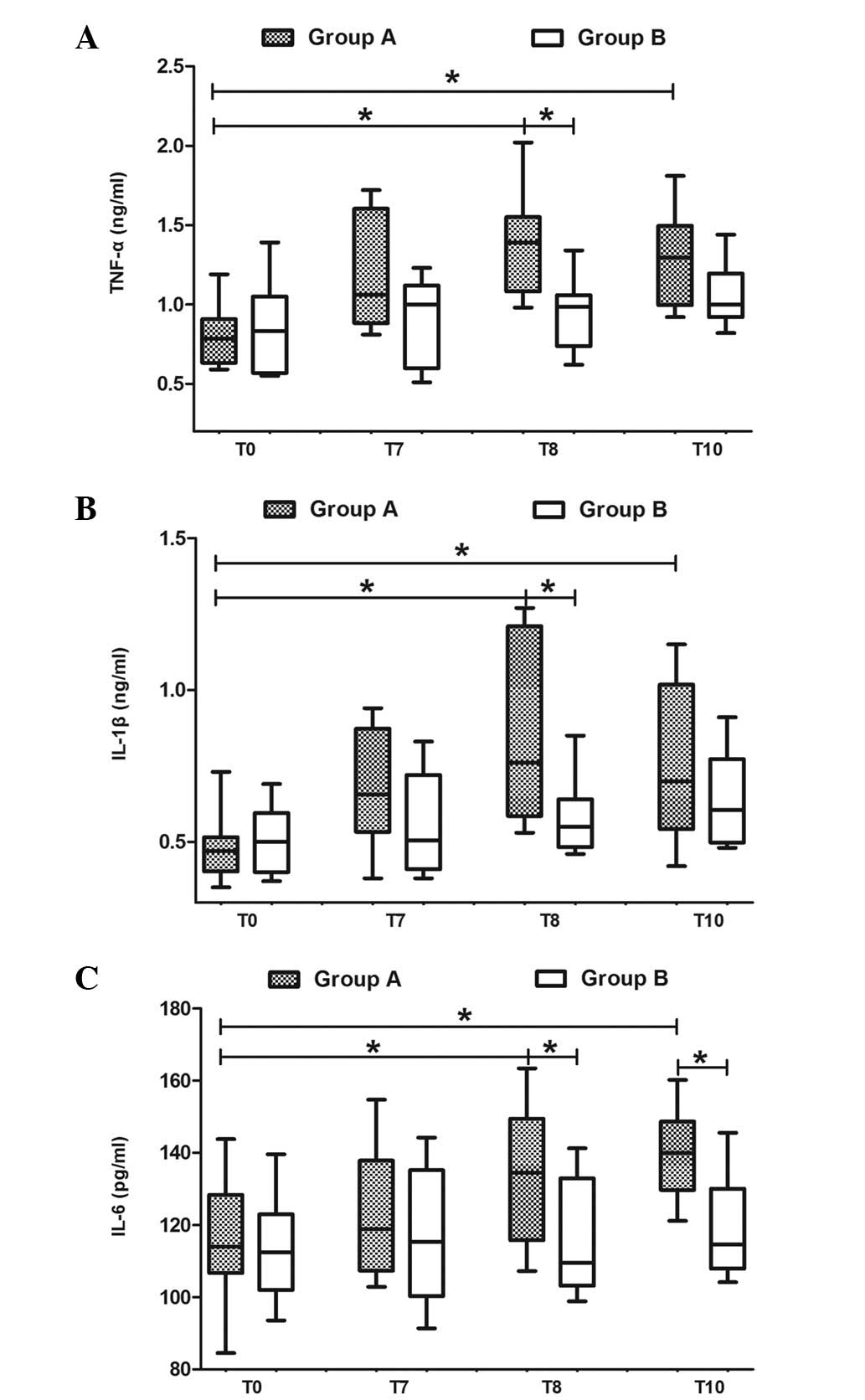|
1.
|
Stein PD, Yaekoub AY, Matta F and
Kleerekoper M: Fat embolism syndrome. Am J Med Sci. 336:472–477.
2008. View Article : Google Scholar : PubMed/NCBI
|
|
2.
|
Eriksson EA, Pellegrini DC, Vanderkolk WE,
Minshall CT, Fakhry SM and Cohle SD: Incidence of pulmonary fat
embolism at autopsy: an undiagnosed epidemic. J Trauma. 71:312–315.
2011. View Article : Google Scholar : PubMed/NCBI
|
|
3.
|
Ereth MH, Weber JG, Abel MD, et al:
Cemented versus noncemented total hip arthroplasty - embolism,
hemodynamics, and intrapulmonary shunting. Mayo Clin Proc.
67:1066–1074. 1992. View Article : Google Scholar : PubMed/NCBI
|
|
4.
|
Bolliger SA, Muehlematter K, Thali MJ and
Ampanozi G: Correlation of fat embolism severity and subcutaneous
fatty tissue crushing and bone fractures. Int J Legal Med.
125:453–458. 2011. View Article : Google Scholar : PubMed/NCBI
|
|
5.
|
Krebs J, Ferguson SJ, Hoerstrup SP, Goss
BG, Haeberli A and Aebli N: Influence of bone marrow fat embolism
on coagulation activation in an ovine model of vertebroplasty. J
Bone Joint Surg Am. 90:349–356. 2008. View Article : Google Scholar : PubMed/NCBI
|
|
6.
|
Blankstein M, Byrick RJ, Richards RR,
Mullen JB, Zdero R and Schemitsch EH: Pathophysiology of fat
embolism: a rabbit model. J Orthop Trauma. 25:674–680. 2011.
View Article : Google Scholar : PubMed/NCBI
|
|
7.
|
McIff TE, Poisner AM, Herndon B,
Lankachandra K, Molteni A and Adler F: Mitigating effects of
captopril and losartan on lung histopathology in a rat model of fat
embolism. J Trauma. 70:1186–1191. 2011. View Article : Google Scholar : PubMed/NCBI
|
|
8.
|
Liu DD, Hsieh NK and Chen HI:
Histopathological and biochemical changes following fat embolism
with administration of corn oil micelles: a new animal model for
fat embolism syndrome. J Bone Joint Surg Br. 90:1517–1521.
2008.PubMed/NCBI
|
|
9.
|
McIff TE, Poisner AM, Herndon B, et al:
Fat embolism: evolution of histopathological changes in the rat
lung. J Orthop Res. 28:191–197. 2010.PubMed/NCBI
|
|
10.
|
Shaikh N: Emergency management of fat
embolism syndrome. J Emerg Trauma Shock. 2:29–33. 2009. View Article : Google Scholar : PubMed/NCBI
|
|
11.
|
Fong DL, Murnane RD, Hotchkiss CE, Green
DJ and Hukkanen RR: Pulmonary embolization of fat and bone marrow
in cynomolgus Macaques (Macaca fascicularis). Comp Med.
61:86–91. 2011.PubMed/NCBI
|
|
12.
|
Blankstein M, Byrick RJ, Nakane M, et al:
Amplified inflammatory response to sequential hemorrhage,
resuscitation, and pulmonary fat embolism: an animal study. J Bone
Joint Surg Am. 92:149–161. 2010. View Article : Google Scholar : PubMed/NCBI
|
|
13.
|
Yoga R, Theis JC, Walton M and Sutherland
W: Interleukin-6 as an early marker for fat embolism. J Orthop Surg
Res. 4:182009. View Article : Google Scholar : PubMed/NCBI
|
|
14.
|
Liu DD, Kao SJ and Chen HI:
N-acetylcysteine attenuates acute lung injury induced by fat
embolism. Crit Care Med. 36:565–571. 2008. View Article : Google Scholar : PubMed/NCBI
|
|
15.
|
Kao SJ and Chen HI: Nitric oxide mediates
acute lung injury caused by fat embolism in isolated rat’s lungs. J
Trauma. 64:462–469. 2008.PubMed/NCBI
|
|
16.
|
Kao SJ, Yeh DY and Chen HI: Clinical and
pathological features of fat embolism with acute respiratory
distress syndrome. Clin Sci (Lond). 113:279–285. 2007. View Article : Google Scholar : PubMed/NCBI
|
|
17.
|
Hsu YH, Kao SJ, Lee RP and Chen HI: Acute
pulmonary oedema: Rare causes and possible mechanisms. Clin Sci
(Lond). 104:259–264. 2003. View Article : Google Scholar : PubMed/NCBI
|
|
18.
|
Krebs J, Ferguson SJ, Nuss K, et al:
Sildenafil prevents cardiovascular changes after bone marrow fat
embolization in sheep. Anesthesiology. 107:75–81. 2007. View Article : Google Scholar : PubMed/NCBI
|
|
19.
|
Aebli N, Krebs J, Davis G, Walton M,
Williams MJ and Theis JC: Fat embolism and acute hypotension during
vertebroplasty: an experimental study in sheep. Spine. (Phila Pa
1976). 27:460–466. 2002. View Article : Google Scholar : PubMed/NCBI
|
|
20.
|
Wheelwright EF, Byrick RJ, Wigglesworth
DF, et al: Hypotension during cemented arthroplasty. Relationship
to cardiac output and fat embolism. J Bone Joint Surg Br.
75:715–723. 1993.PubMed/NCBI
|
|
21.
|
Peebles DJ, Ellis RH, Stride SD and
Simpson BR: Cardiovascular effects of methylmethacrylate cement. Br
Med J. 1:349–351. 1972. View Article : Google Scholar : PubMed/NCBI
|
|
22.
|
Berkowitz DM, Danai PA, Eaton S, Moss M
and Martin GS: Accurate characterization of extravascular lung
water in acute respiratory distress syndrome. Crit Care Med.
36:1803–1809. 2008. View Article : Google Scholar : PubMed/NCBI
|
|
23.
|
Whelan DB, Byrick RJ, Mazer CD, et al:
Posttraumatic lung injury after pulmonary contusion and fat
embolism: factors determining abnormal gas exchange. J Trauma.
69:512–518. 2010. View Article : Google Scholar : PubMed/NCBI
|
|
24.
|
Kaufmann TJ, Jensen ME, Ford G, Gill LL,
Marx WF and Kallmes DF: Cardiovascular effects of
polymethylmethacrylate use in percutaneous vertebroplasty. AJNR Am
J Neuroradiol. 23:601–604. 2002.PubMed/NCBI
|
|
25.
|
Murphy P, Edelist G, Byrick RJ, Kay JC and
Mullen JB: Relationship of fat embolism to haemodynamic and
echocardio-graphic changes during cemented arthroplasty. Can J
Anaesth. 44:1293–1300. 1997. View Article : Google Scholar : PubMed/NCBI
|
|
26.
|
Lehnert BE: Pulmonary and thoracic
macrophage subpopulations and clearance of particles from the lung.
Environ Health Perspect. 97:17–46. 1992. View Article : Google Scholar : PubMed/NCBI
|
|
27.
|
Mellor A and Soni N: Fat embolism.
Anaesthesia. 56:145–154. 2001. View Article : Google Scholar
|
|
28.
|
Kim YH: Incidence of fat embolism syndrome
after cemented or cementless bilateral simultaneous and unilateral
total knee arthroplasty. J Arthroplasty. 16:730–739. 2001.
View Article : Google Scholar : PubMed/NCBI
|
|
29.
|
Pitto RP, Blunk J and Kössler M:
Transesophageal echocardiography and clinical features of fat
embolism during cemented total hip arthroplasty. A randomized study
in patients with a femoral neck fracture. Arch Orthop Trauma Surg.
120:53–58. 2000.
|
|
30.
|
Taviloglu K and Yanar H: Fat embolism
syndrome. Surg Today. 37:5–8. 2007. View Article : Google Scholar
|


















